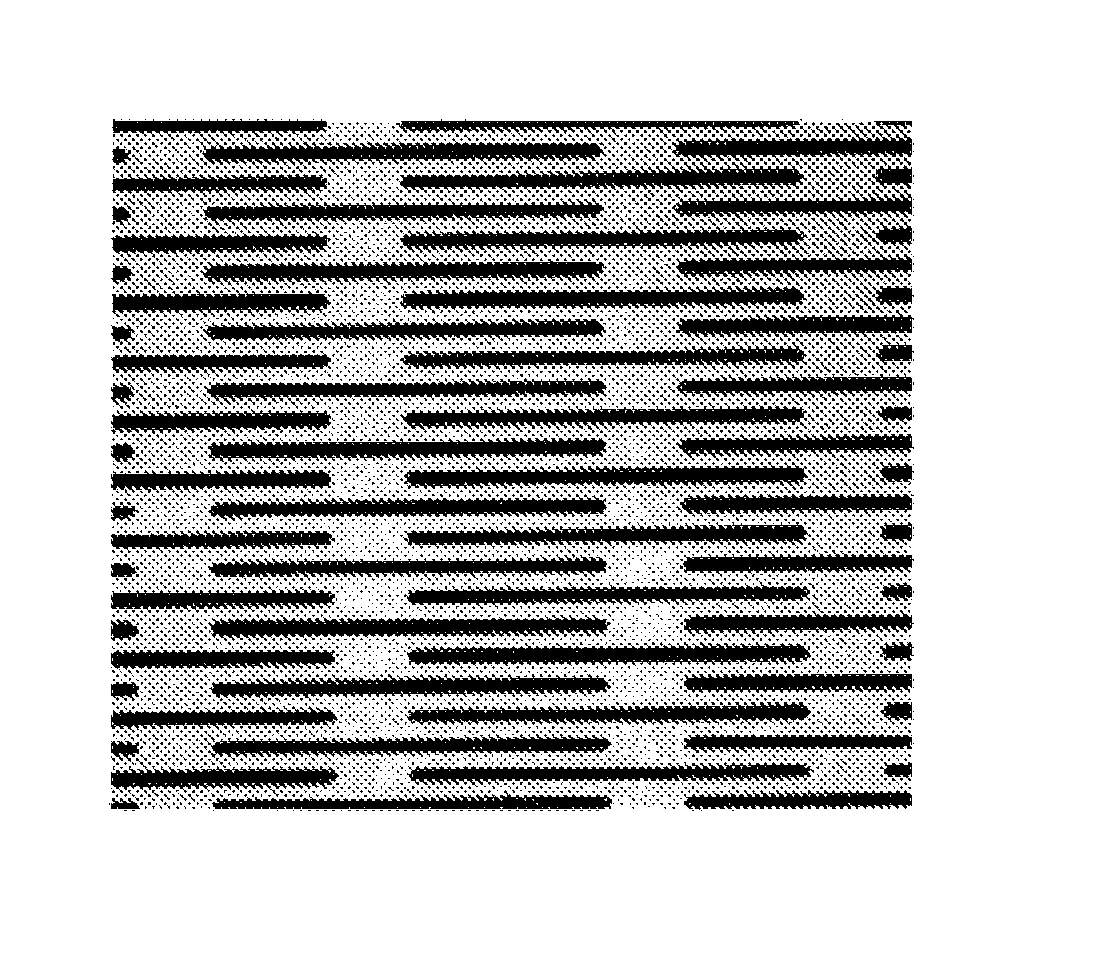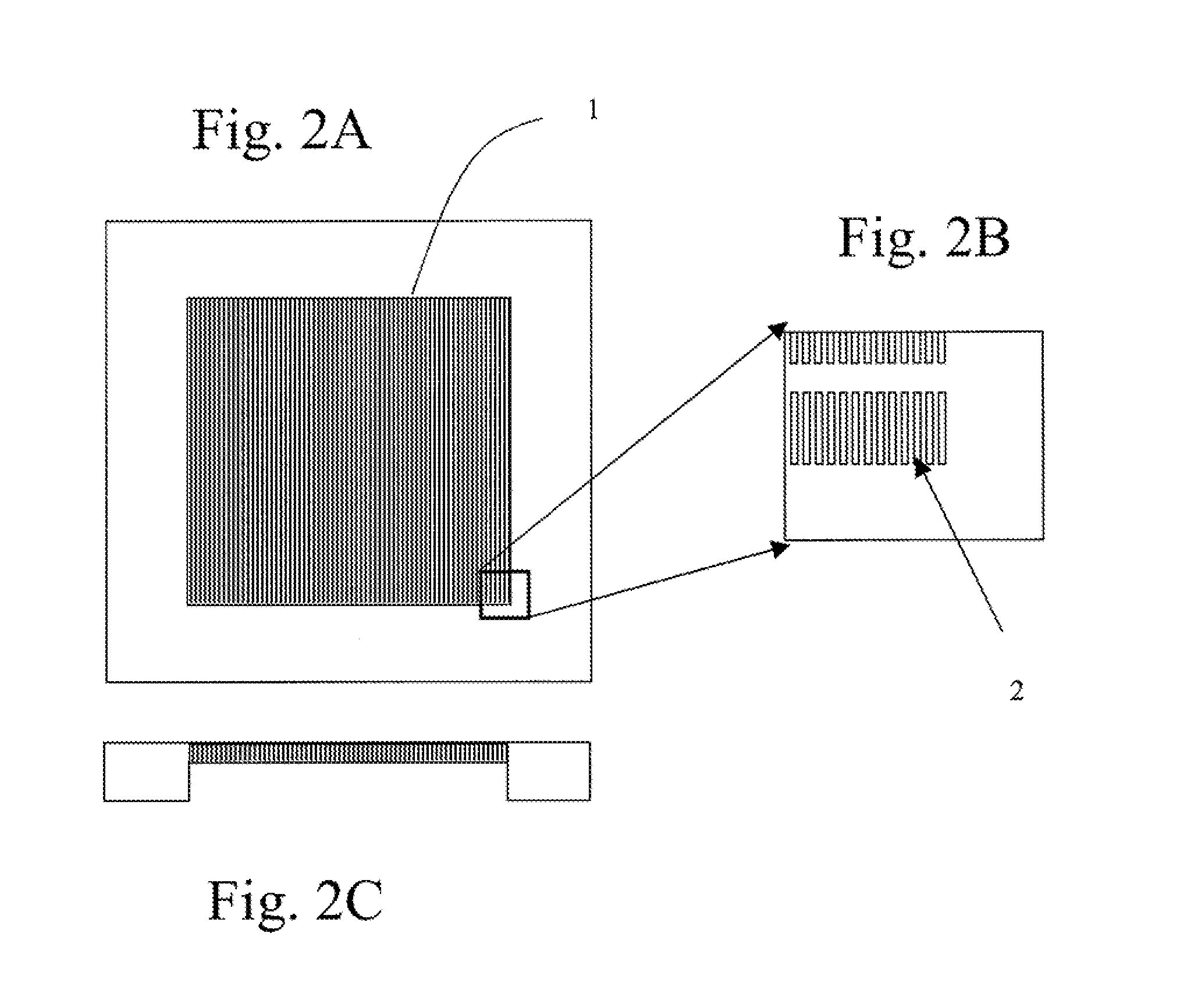Methods and compositions for separating or enriching cells
a technology of enrichment and cell, applied in the field of bioseparation, can solve the problems of difficult automation, low efficiency of removing red blood cells by these methods, and laborious separation, and achieve the effect of facilitating diagnosis and prognosis
- Summary
- Abstract
- Description
- Claims
- Application Information
AI Technical Summary
Benefits of technology
Problems solved by technology
Method used
Image
Examples
example 1
Fabrication of a Filter for Removing Red Blood Cells from a Blood Sample
[0353]A silicon chip of dimensions (1.8 cm by 1.8 cm×500 micron) was used to fabricate a filtration area of 1 cm by 1 cm by 50 micron with slots having dimensions from about 0.1 micron to about 1000 microns, preferably from about 20 to 200 microns, preferably from about 1 to 10 microns, more preferably 2.5 to 5 microns. The slots were vertically straight with a maximum tapered-angle of less than 2%, preferably less than about 0.5% with an offset distance between neighboring columns of the filter slots were 1 to 500 microns, preferably from 5to 30 microns.
[0354]Manufacturing included providing a silicon chip having the above referenced dimensions and coating the top and bottom of the silicon chip with a dielectric layer. A cavity along the bottom portion of the chip was then created. The cavity was formed by removing an appropriate cavity pattern from the dielectric layer, and then etching the silicon chip genera...
example 2
Chemical Treatment of a Microfabricated Filter
[0355]A filter chip made as described in Example 1 was placed on a ceramic heating plate in an oven and heated at 800 degrees Celsius for 2 hours in oxygen containing gas (e.g. air). The heating source was then turned off the chips are slowly cooled overnight. This results in a thermally grown layer on the surface of the chip.
[0356]A nitride layer could also be deposited onto the filter surface. An oxide layer is put on the surface of the chip by low-pressure chemical vapor deposition (LPCVD) in a reactor at temperatures up to ˜900° C. The deposited film is a product of a chemical reaction between the source gases supplied to the reactor. The process is typically performed on both sides of the substrate at the same time to form a layer of Si3N4.
example 3
Polyvinylpyrrolidone (PVP) and Polyvinyl Alcohol (PVA) Filter Coatings
[0357]Filter chips made by the method of Example 1 were coated with either PVP or PVA. For coating the chips with either PVP or PVA, the chips were pre-treated as follows: The filter chips were rinsed with deionized water and then immersed in 6N nitric acid. The chips were placed on a shaker for 30 minutes at 50 degrees Celsius. After acid treatment, the chips were rinsed in deionized water.
[0358]For PVP coating, chips were immersed in 0.25% polyvinylpyrrolidone (K-30) at room temperature until the chips were ready for use. Chips were then rinsed with deionized water and dried by pressurized air.
[0359]For PVA coating, after acid treatment and rinsing in water, the chips were stored in water prior to coating. To make the 0.25% PVA (Mn 35,000-50,000) solution, dissolve the PVA in water under slow heating to 80 degrees Celsius and gentle stirring. To coat, the chips were immersed in a hot PVA solution and heated for ...
PUM
| Property | Measurement | Unit |
|---|---|---|
| area | aaaaa | aaaaa |
| area | aaaaa | aaaaa |
| area | aaaaa | aaaaa |
Abstract
Description
Claims
Application Information
 Login to View More
Login to View More - R&D
- Intellectual Property
- Life Sciences
- Materials
- Tech Scout
- Unparalleled Data Quality
- Higher Quality Content
- 60% Fewer Hallucinations
Browse by: Latest US Patents, China's latest patents, Technical Efficacy Thesaurus, Application Domain, Technology Topic, Popular Technical Reports.
© 2025 PatSnap. All rights reserved.Legal|Privacy policy|Modern Slavery Act Transparency Statement|Sitemap|About US| Contact US: help@patsnap.com



